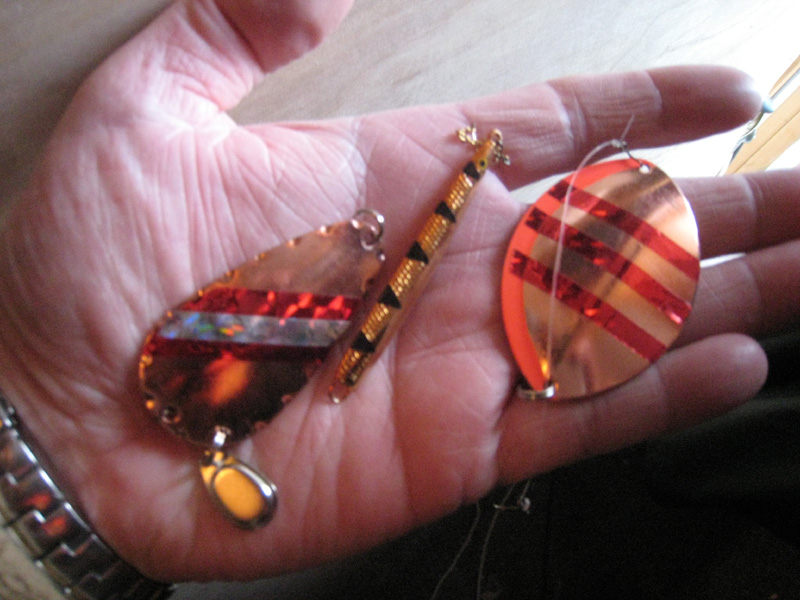Ice fishing

As winter is long up here and lakes are covered with ice this is your only option half the year.
The trouble when fishing on an ice covered lake, obviously, is getting the hook and bait trough the ice and present it to the fish.
An axe is useful only in the beginning of winter/late fall, or when fishing at the sea ice.
Even in the low lying areas the lake ice is 50-100 centimetres thick most of the winter.
In the mountains it could be as much as 1.5 - 2 meters.
An ice auger is most useful. If you are going fishing in the mountains I would recommend you buy an adjutable ice auger (long).
My father once met two Dutch men out ice fishing in the mountains of Troms County. They had bought their ice auger (Moraspiralen) in Tromsø and the store clerk had said that it was long enough.
They had not reached water in any of their attempt to drill a hole in the ice.
My father and his buddy found their own augers and drilled a lot of holes for them.

The size of the auger is not that important. A wider auger is harder to use than a smaller one. Besides one could drill two holes beside each other if the fish in the lake is too big for the auger size.
I also carry along extra knives for the auger in case I drill in a rock or bottom. It is easier to just change the blades than to begin sharpening them in the cold.
An ice chisel could also be an option (very little used up here). Perhaps not in the mountains, but it will do in the low land. It will take some time to get trough the ice, but you get to decide the size of the hole yourself, and that’s nice if you are placing gill nets under the ice.
Other than the means to get a hole trough the ice you will need a fishing line, a hook and bait.
Of course you could buy ice fishing rods, but it is not necessary (I have several though).

The hooks are the same as in summer and bait could be anything. I’ve used cheese, squid, Gammarus lacustris, bacon and maggots. All seem to work or not, depending on the fish mood.
Maggots are by far the most common bait nowadays.
When fishing arctic char (and other fish) one also uses a lure above the hook. Sometimes these lures could be pretty big. The lures “job” is to attract the fish and big bling does the job better than smaller bling. After all it could be pretty dark under the ice.
The lures (bigger ones) are made mostly of brass or copper.

A spoon could be used to make a lure in a pinch.
Let the lure hit the bottom and start jigging.
Trout is usually caught with smaller lures than char. As the trout is cold and lazy compared to the char I mostly use set lines when fishing after them.
Another nice tool is an ice spoon (picture below top). While it is not necessary it will save you from freezing your fingers when cleaning the hole from ice and snow. I didn`t own one until recently.
A cheap alternative to buying a ready made is to buy a cheap plastic ladle and drill holes in it or one that already has holes, a "fish spoon" (picture below bottom).

Ice fishing is commonly divided in active fishing and set lines. Set lines are usually frowned upon by sports fishermen and some places illegal.
But like a gill net set lines fish while you do other chores.
That said actively fishing could also yield a good catch if you have the time.
I mostly use a mix of the two methods, but then again, I usually fish for recreation not survival.
Post script:
I have maybe given the impression that ice fishing is just drilling a hole trough the ice, putting the lure in and haul up fish.
It isn`t. Weather, the lure, bait, temperature and so on, all play a role.
Ice fishing contains all the variables fishing in summere have.